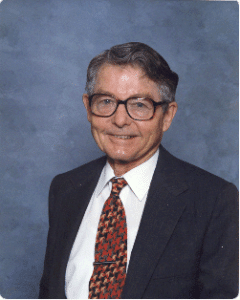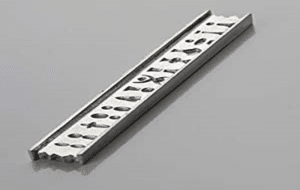By Dr. Raymond A. Keller, a.k.a. “Cosmic Ray,” author of the international awards-winning Venus Rising series of books All of Raymonds Venus Rising Books Can Be Found HERE
Richard Alan Ferrell, Ph.D., Physics (1926-2005), early pioneer in anti-gravity research; for a thorough biography see https://umdphysics.umd.edu/about-us/2-uncategorised/539-richard-a-ferrell-.html.
The work of the Gravity Research Foundation (GRF) of New Boston, Massachusetts, was proving invaluable in attempts at extending theories of anti-gravity into the general discourse of the scientific community, moving the subject from the realm of “crackpots” into abstraction and generalizations based on a wide array of observations and the results of sundry experimentation. In the GRF award-winning essay selected for 1950, a then graduate student in the physics department at Princeton University in New Jersey, Richard A. Ferrell, turned his attention to the two principal features of general relativity as a field theory and how it relates to the gravitational interaction of matter. These included:
- The production of the field of disturbance in space by the matter existing elsewhere. One portion of space is considered to influence (more strongly if it contains matter) its neighbor, the latte to pass on the condition in turn to its neighbor, and so on until the disturbance has been extended throughout the universe. This situation is analogous to the spreading of waves over the surface of a pond. There are partial differential equations to describe accurately how the neighbors act on one another.
- The exertion of actual forces upon matter at any given point by the field or disturbance which happens to exist at that point.
From his preliminary analysis of this two-part theory, Ferrell initially thought that he might be able to attack the problem of finding gravitational shields, absorbers, reflectors or similar devices through an investigation of either of the two aspects separately. He was hoping to find a new way of producing the field or a new way of having the field act upon the matter. However, Ferrell noted in his GRF 1950 essay on the “Possibility of New Gravitational Effects,” that, “A particle which, according to the second aspect of the theory, is acted upon by the field will also produce a field of its own. When this is added to the original field already present, one is able to describe the total field in terms of the equations of the first aspect of this theory. These equations require the field at every point of space to change in a certain manner with time, and thereby also specify the way the portion due to the particle alone varies with time.”
The young scientist continued to clarify this complex subject: “But because the particle and the field it produces are intimately connected, we consequently see that the motion of the particle is also determined by the first aspect and that the second aspect is not actually a separate, independent phase of the theory. The realization and proof of this fact is a development of recent years. More precisely, Einstein, Schild and Infield have proved that the equation of motion of a particle can be derived from gravitational field equations.”
Essentially, following Einstein’s long road of equations had led Ferrell down to a dead-end street when it came to finding any possible access it might afford to new and useful effects such as the shield, reflection or absorption of the gravitational field. The scientist surmised that, “This does not mean that new effects are not likely to be discovered. However, these future effects will surely be rather subtle to have gone unnoticed for so long. Such, for example, was the case with the discovery of the laws of electromagnetism by Faraday and Maxwell. Only much later did these slight and previously unnoticed phenomena become the basis of dynamos, electric motors, radio, etc.”
Farrell did admit that the scientific community of the early 1950s should remain optimistic about finding a unified field theory which will adequately describe both gravitation and electrodynamics. He noted that Einstein’s latest theory had not yet reached that important stage; but, in the young scientist’s estimation, Einstein’s theorizing gave every indication of at least moving in the right direction toward achieving this end. Clearly, when such a comprehensive theory appears on the scene, it should give many predictions of completely unsuspected phenomena, depending upon the interaction of electric charges and the gravitational field. The great difficulty with laboratory experiments involving general relativity, however, would be in measuring the extremely small effects.
The Princeton graduate student addressed this issue: “However,” he declared, “if coupled with the much stronger electrical effects, general relativity might be made an experimental field of investigation and brought into the laboratory for the first time. Work in both the theoretical and hopefully, later the experimental aspects of this subject should be strongly encouraged as it could be very fruitful.”
What history has shown is that a frontal attack in science does not necessarily prove to be the most successful approach. Endeavors that are guided primarily by the desire to know and to understand the laws of nature have proven to be the ones that have resulted in becoming the most beneficial to the progress of humankind, i.e. backyard mechanics like John Roy Robert Searl in the United Kingdom trying to build their own versions of flying saucers or Nikola Tesla designing electric airships based on dreams and visions.
Of the two aspects of Einstein’s theory, however, Ferrell did admit that, “There is only one feature to consider in surveying known and in scouting for unknown gravitational effects, viz. the production of the field by matter.” Isn’t it interesting to note that Searl postulated that gravity was a particle? Since it emitted radiation, he assumed it has a mass.
Replica of I-beam composed of unknown alloy and inscribed in type of hieroglyphics recovered from the Roswell, New Mexico, UFO crash site on 7 July 1947 by Army Air Corps crash retrieval detachment personnel. Entire craft was supposedly fabricated with the same alloy.



